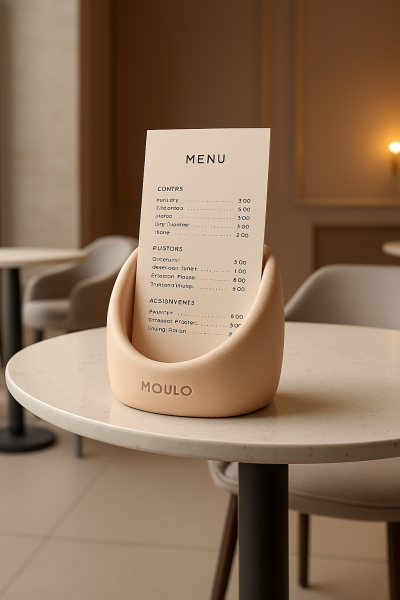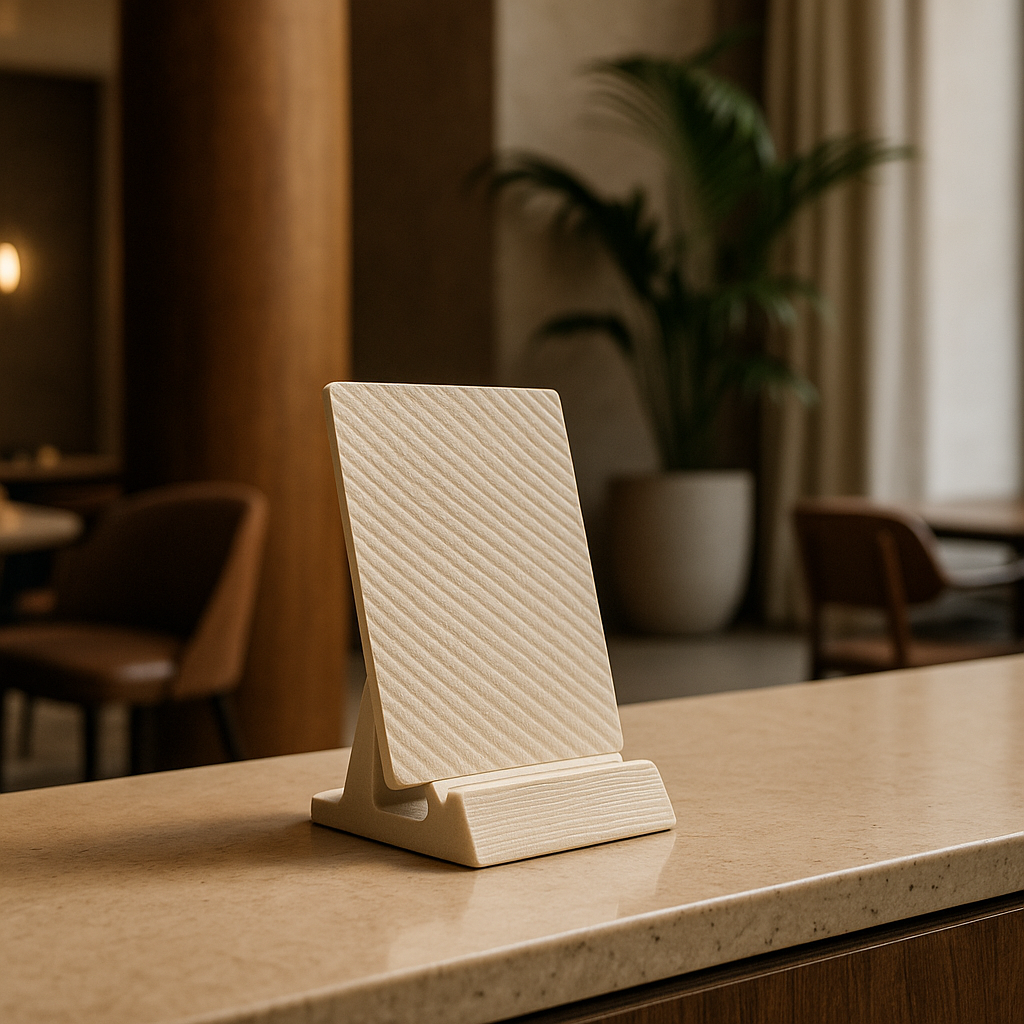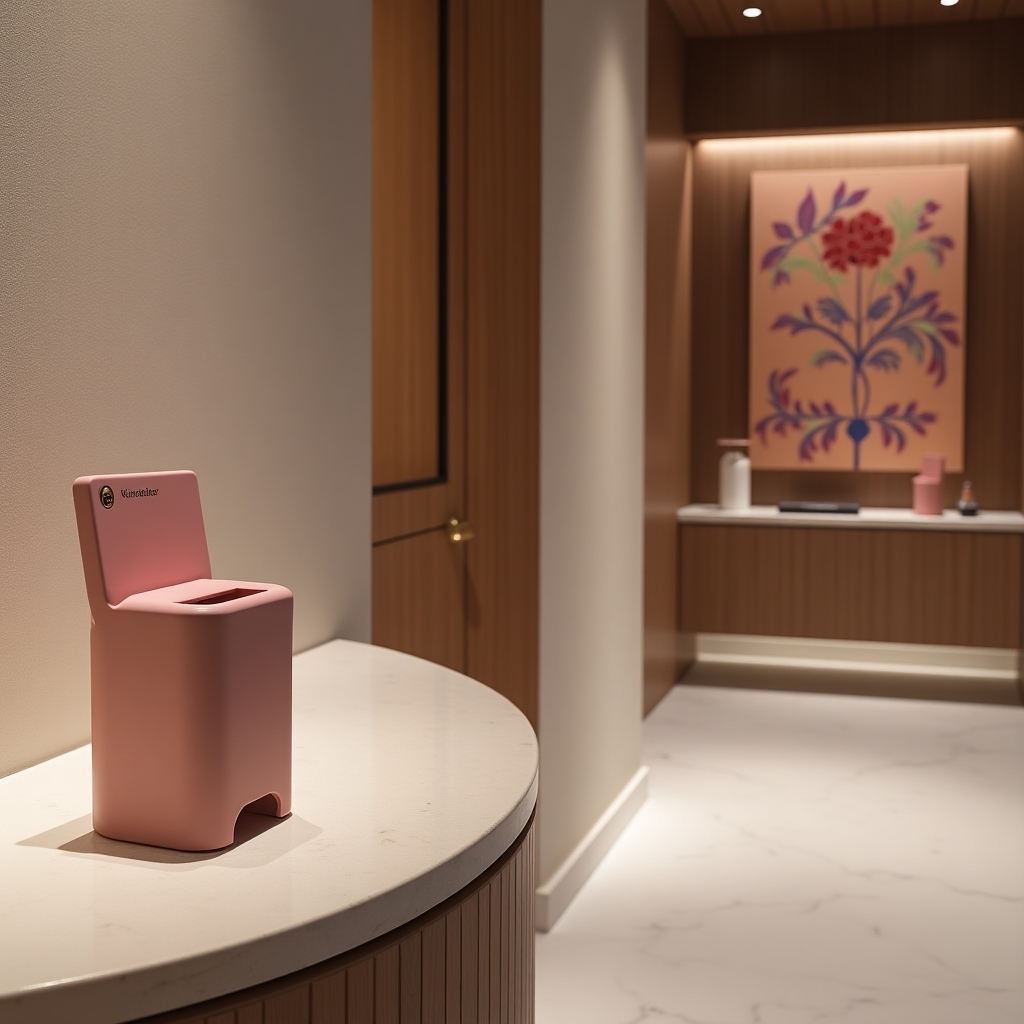Designing Through Detail: How Small Gestures Create Memorable Experiences
Wednesday, 24 de September de 2025

Design isn’t only about what you see. It’s about what you touch, sense, and remember—without even knowing why.
In contract spaces—hotels, restaurants, shops, waiting rooms, or galleries—the greatest impact often hides within the smallest gestures. A tactile sign that guides without overwhelming. A holder that blends seamlessly with its surroundings. A well-designed dispenser that turns a routine action into a pleasant experience.
It’s not about decoration or direct branding. It’s about designing a coherent, sensory experience from the functional layer. And here, 3D printing offers a unique opportunity.
1. The Power of the Smallest Gesture
When a client enters a space, they don’t just see it—they inhabit it. Every movement—picking up a menu, finding their way, opening a door—forms part of a silent choreography. And in that choreography, functional elements play a leading role.
Designing a menu holder, a desk organizer, or a doorstop with intention might seem minor. Yet when everything responds to the same visual narrative, the experience becomes fluid, comfortable, and coherent.

2. Functionality Made to Measure
One of the key advantages of 3D printing is the ability to design without molds or minimum runs. This makes it possible to create objects fully adapted to the needs of the space: holders with the perfect angle, pieces that fit existing furniture, or dispensers shaped for a specific user gesture.
They can also be easily modified for campaigns, seasons, or new graphic lines. In spaces that evolve—like pop-up stores or restaurants with seasonal menus—this flexibility makes all the difference.
3. The Aesthetics of Use
Functional doesn’t mean neutral. An object can serve its purpose and still reinforce the identity of the space. With 3D printing, volumes, materials, textures, and even colors can be fine-tuned so each piece speaks the language of its environment.
A mineral-textured menu holder? A hygiene totem with organic geometries? A room identifier printed in translucent resin? Details don’t need to be hidden. They can integrate—or even stand out.
4. Design Without Waste
Another key advantage: only what’s needed is produced. No overstocks, no disposable molds, no unnecessary storage. And when recyclable or bio-based materials are chosen, the environmental footprint shrinks even further.
In contract projects where sustainability is no longer a plus but a requirement, this isn’t just an argument—it’s an operational advantage.

Conclusion
Designing through detail isn’t thinking small. It’s understanding that what becomes memorable often lies in the minimal. At ADITIVARTE, we believe every functional object can be an opportunity to reinforce the identity of a space and improve the experience of those who inhabit it.
Are you redesigning a space?
Let’s talk about the details. That’s where the difference begins.